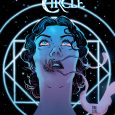Yesterday, July 17, 2020, this country lost a major icon of civil rights, so we at Fangirl Nation Magazine want to celebrate the life and achievements of U.S. Representative John Lewis.
A Civil Rights Icon
The last surviving keynote speaker from the famed 1963 March on Washington, Lewis got his start in the Civil Rights movement as a teenager. He was arrested for the first time in February 1960 for sitting at a “whites-only” counter at a lunch counter in Nashville. He would be arrested 40 or more additional times and beaten countless more times.
Bloody Sunday
Where Lewis really gained the national spotlight was on March 7, 1965, also known as “Bloody Sunday.” He helped plan and lead a march from Selma, Alabama to the state’s capital, Montgomery to challenge Governor George Wallace to give proper rights to African Americans.
As the first row, led by Lewis, set foot on the Edmund Pettus Bridge, Alabama State Troopers and other white men refused to let the marchers pass and savagely attacked them. Lewis himself suffered a cracked skull, as he explained in 2013:
I was hit in the head by a state trooper with a nightstick and had a concussion at the bridge. I remember my legs going out from under me and falling to the ground. I thought it was the last protest. I thought I was going to die and I kept thinking about what was happening to the other people. I don’t recall 48 years later how I made it across the bridge back through the streets of Selma.
Cameras recorded this violence, and that ultimately led to the 1965 Voting Rights Act after people across the country witnessed the brutality. Despite the cracked skull, Lewis still testified in court five days later.
From Sharecropper to Congress
Rising from being the son of sharecroppers who grew up in a segregated school and was prevented from voting, Lewis realized a dream just to serve in the U.S. Congress, which he did for 17 terms. He became known as “the conscience of the Congress” and stood up for the rights of all.
Activists credit Lewis with taking against discrimination based upon sexual orientation and gender identity. Many African American leaders were concerned that in trying to open freedoms for LGBTQ+ people, those who oppose civil rights for all might use this as an opportunity to limit their rights.
Lewis explained his response to such criticism in at a Human Rights Campaign event in 2014: “My simple answer is I fought too hard and too long against discrimination based on race and color not to stand up for discrimination today based upon sexual orientation.”
Looking Back
Possibly the highlight of Lewis’s political career was getting to see the first African American to be elected President. Then, in 2011, President Obama presented Lewis with the Presidential Medal of Freedom, which is the highest honor a civilian can receive.
Lewis participated in several commemorations of Bloody Sunday, including walking with Obama on the 50th anniversary and even surprising people by showing up despite cancer this year for the 55th anniversary. In 2009, the daughter of George Wallace, the governor who ordered the attack on the protestors, was invited to participate in an event. Lewis made a point of taking the hand of Peggy Wallace Kennedy as they walked across the bridge. Years later, she would speak about Lewis, in reference to her father’s treatment of him, at another event:
But today, as his daughter and as a person of my own, I want to do for you what my father should have done and recognize you for your humanity and for your dignity as a child of God, as a person of goodwill and character and as a fellow Alabamian and say, welcome home.
A Different Side
But there was another side to John Lewis that we, at Fangirl Nation, want to highlight. He wrote a graphic novel trilogy called March that takes young adults down the road with him in the Civil Rights struggle. This trilogy was the first ever comics based book to win the National Book Award. It does an outstanding job of making Lewis’s personal struggle against racism real for its readers.
Lewis’s lighter side emerged in 2015 when he attended San Diego Comic-Con to promote March. Snyone who knows anything about Comic-Con knows how much attendees love to cosplay at such events, so Lewis insisted that he had to cosplay too. According to CNN,
“Lewis’ costume was a replica of what he wore at the Edmund Pettus Bridge: a trench coat, a backpack containing two books, and a toothbrush and toothpaste.”
A large group of children attended Lewis’s presentation, and when it was over, Lewis took the children’s hands and led them in a spontaneous march around Comic-Con to give them a flavor of the Civil Rights movement.
The courage of John Lewis is an example for us all.





